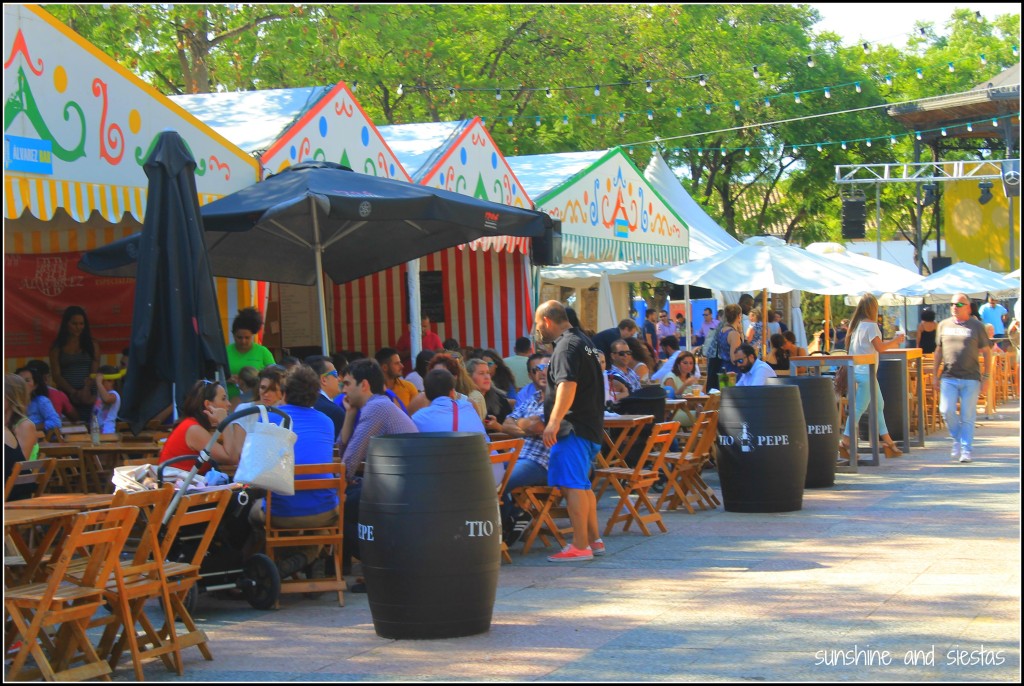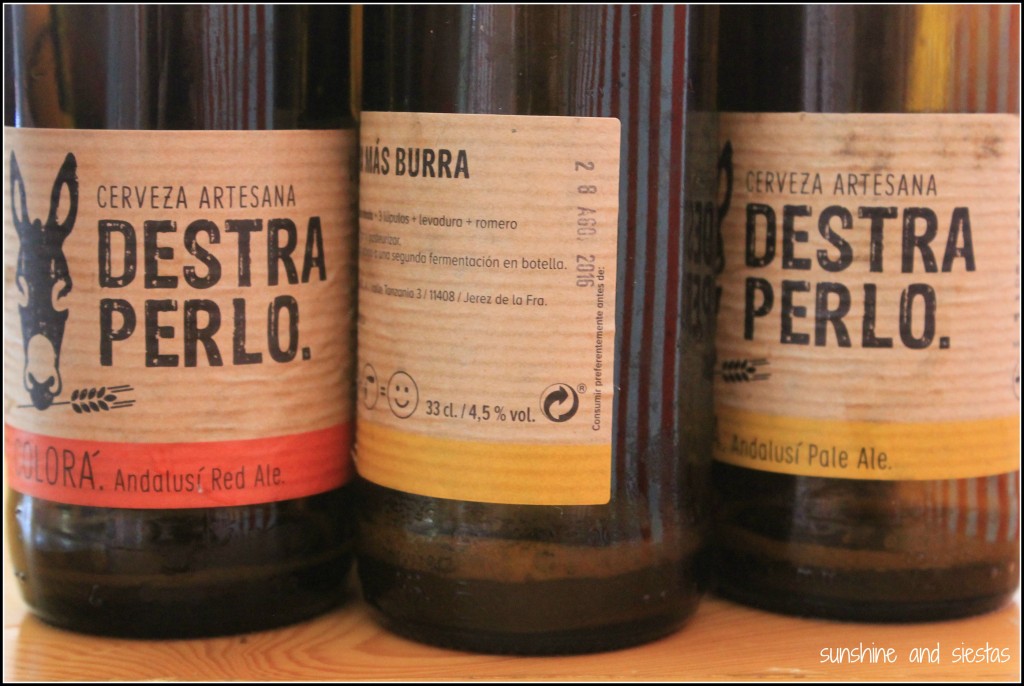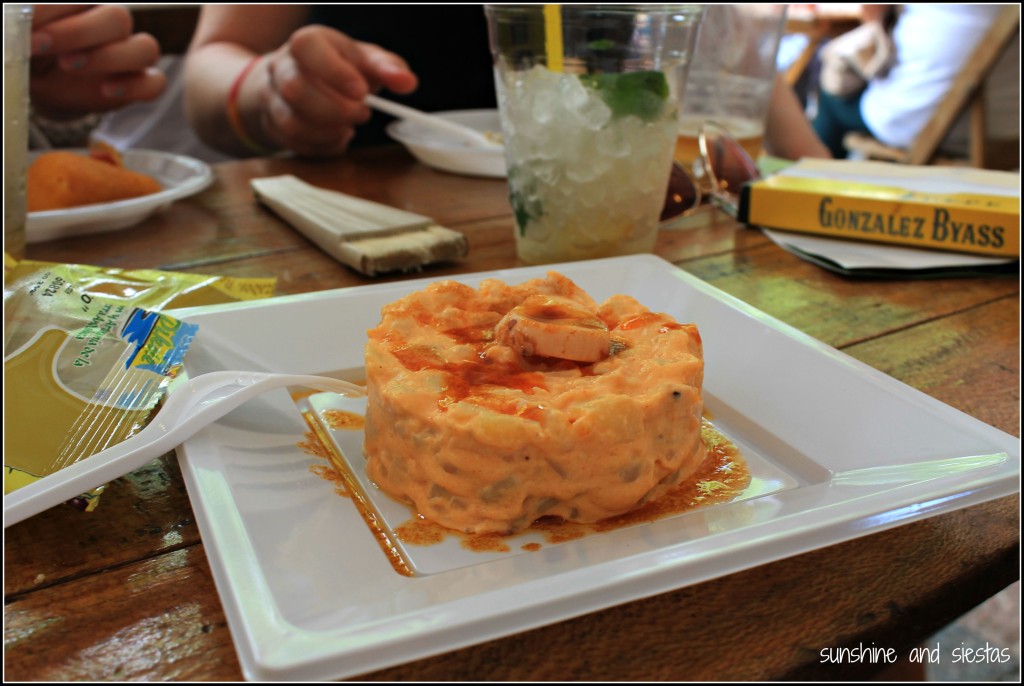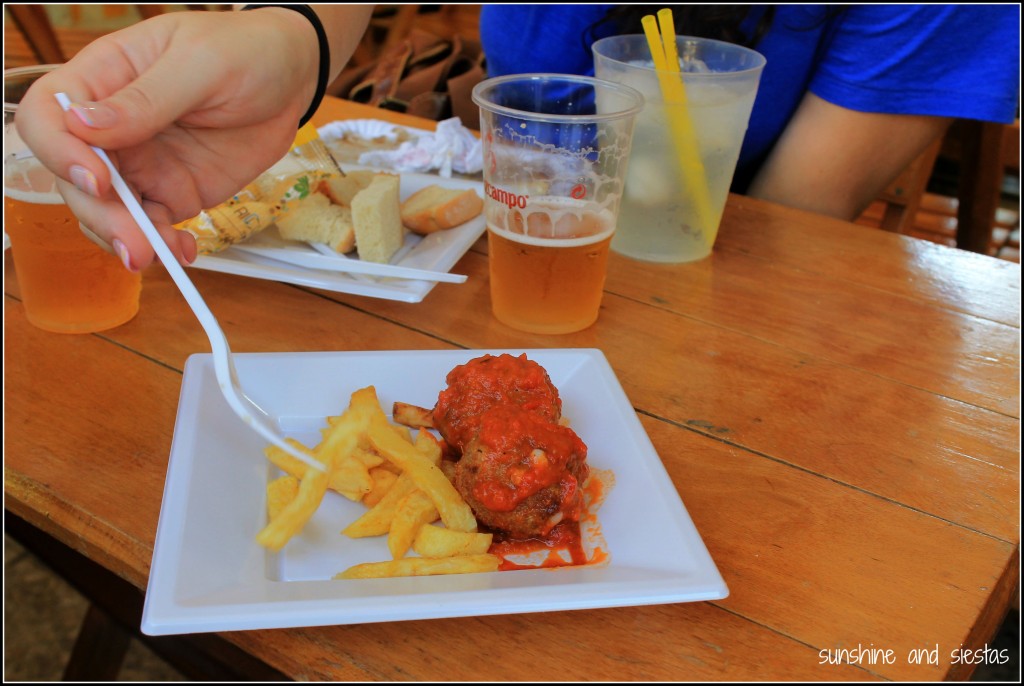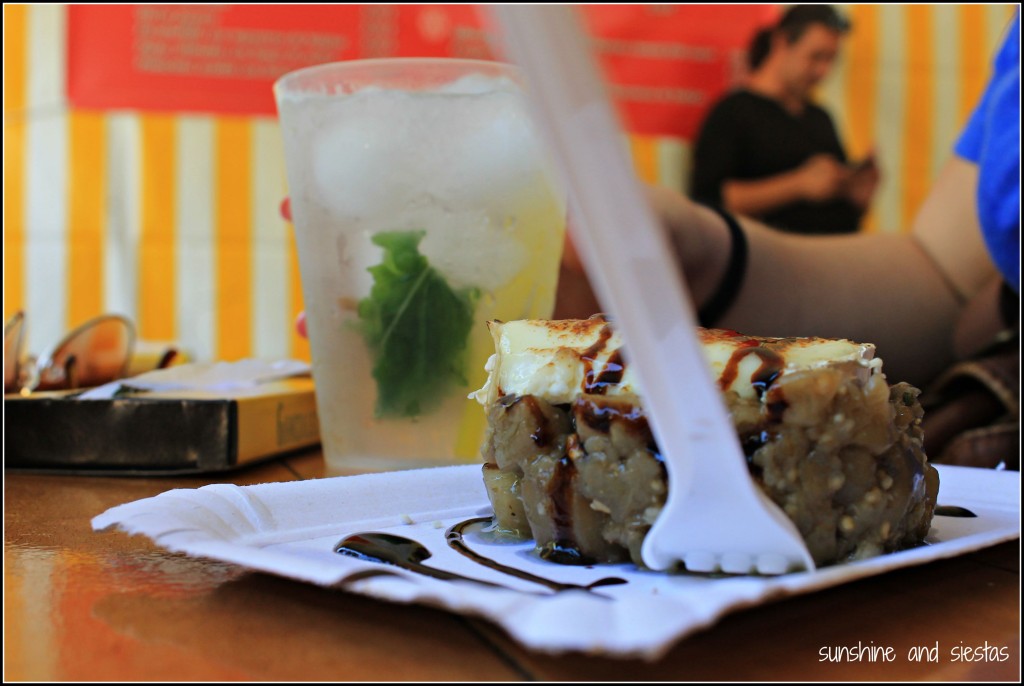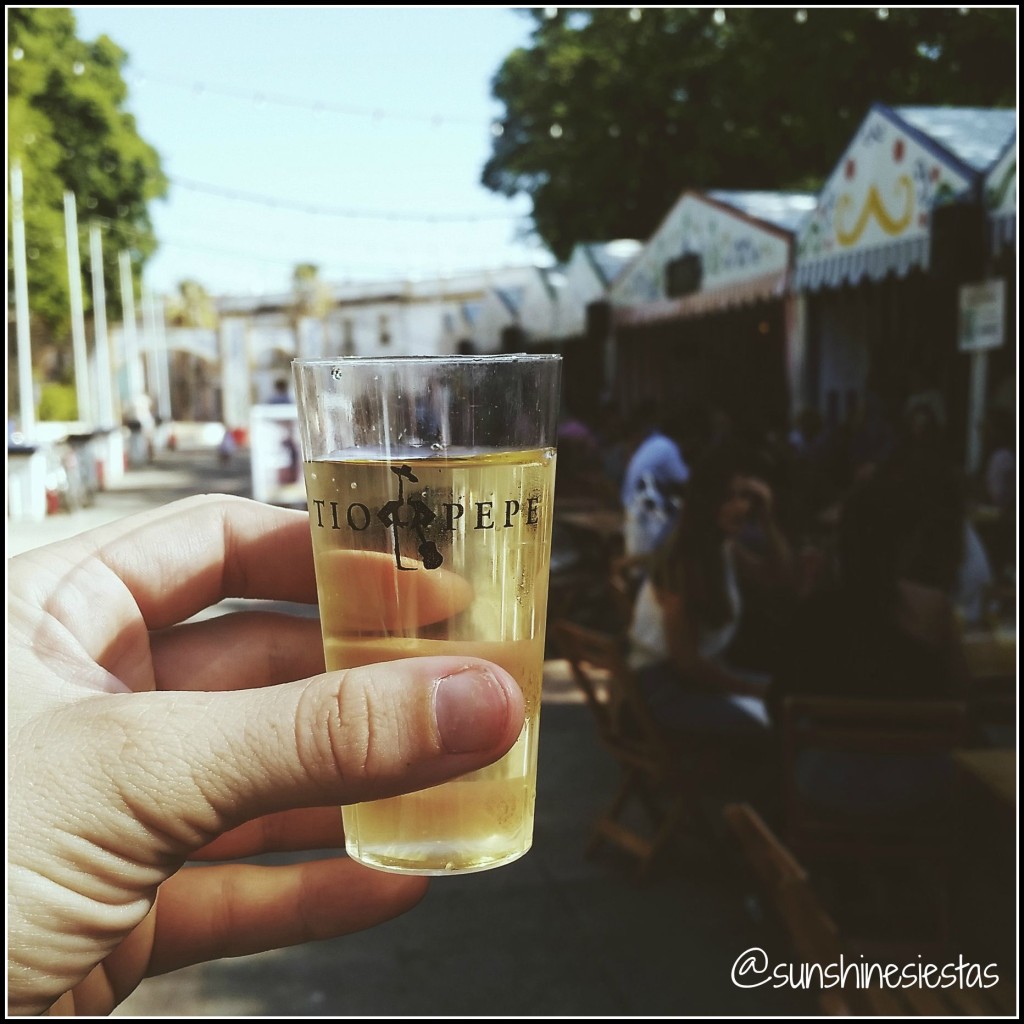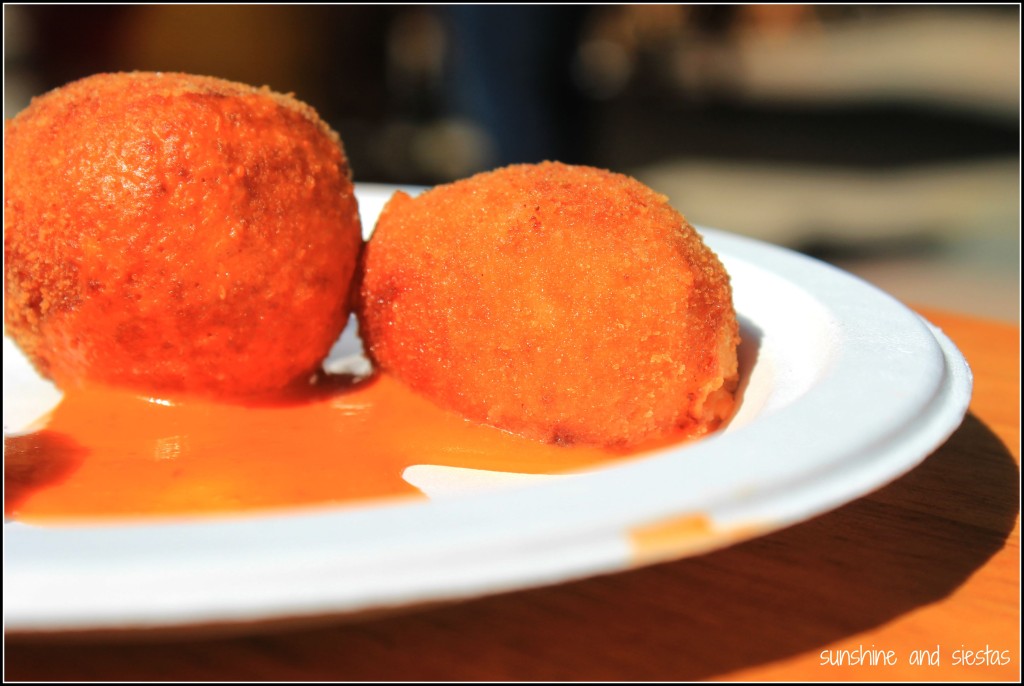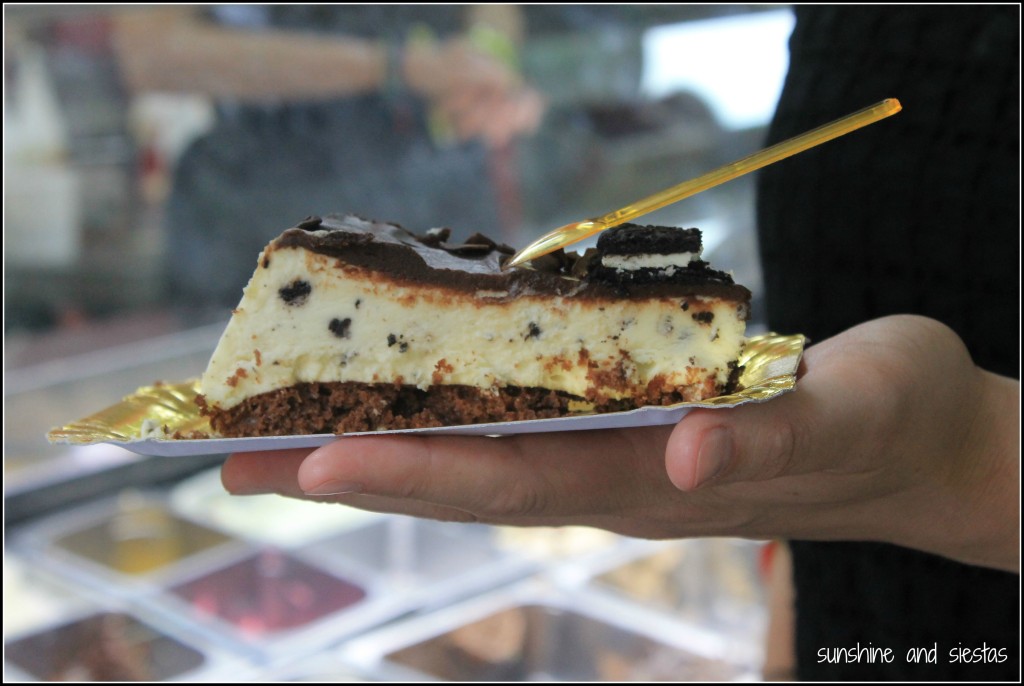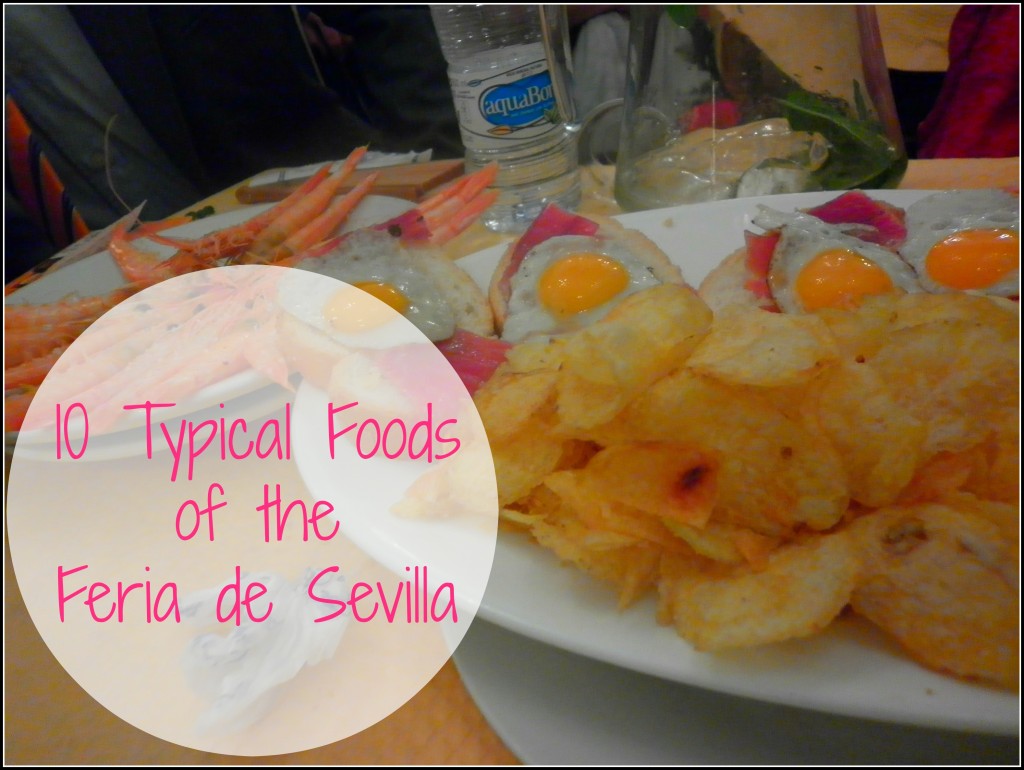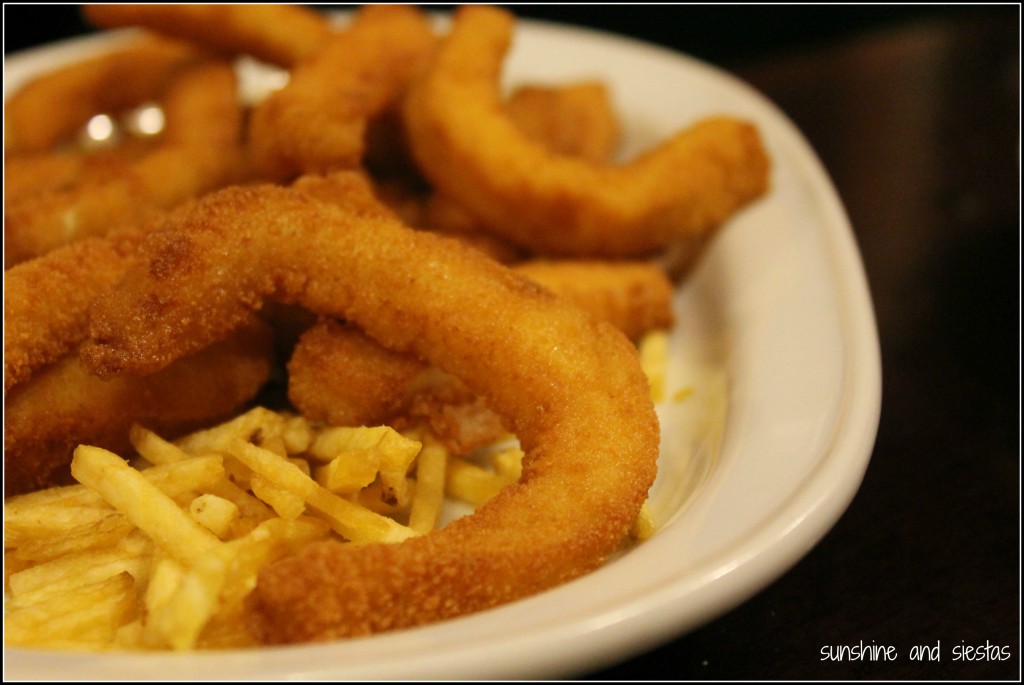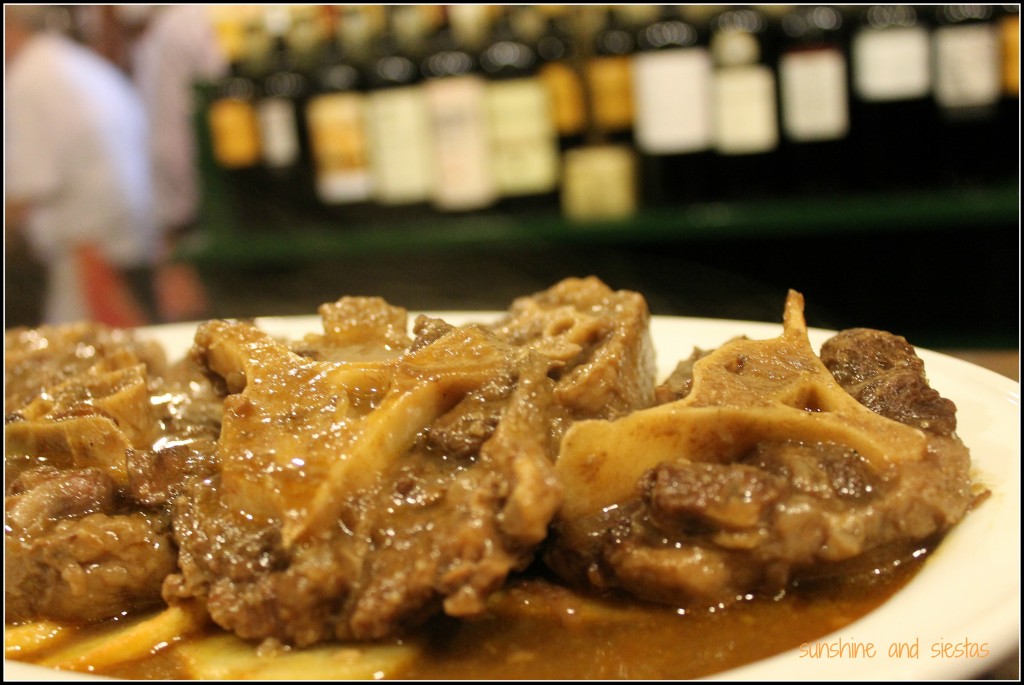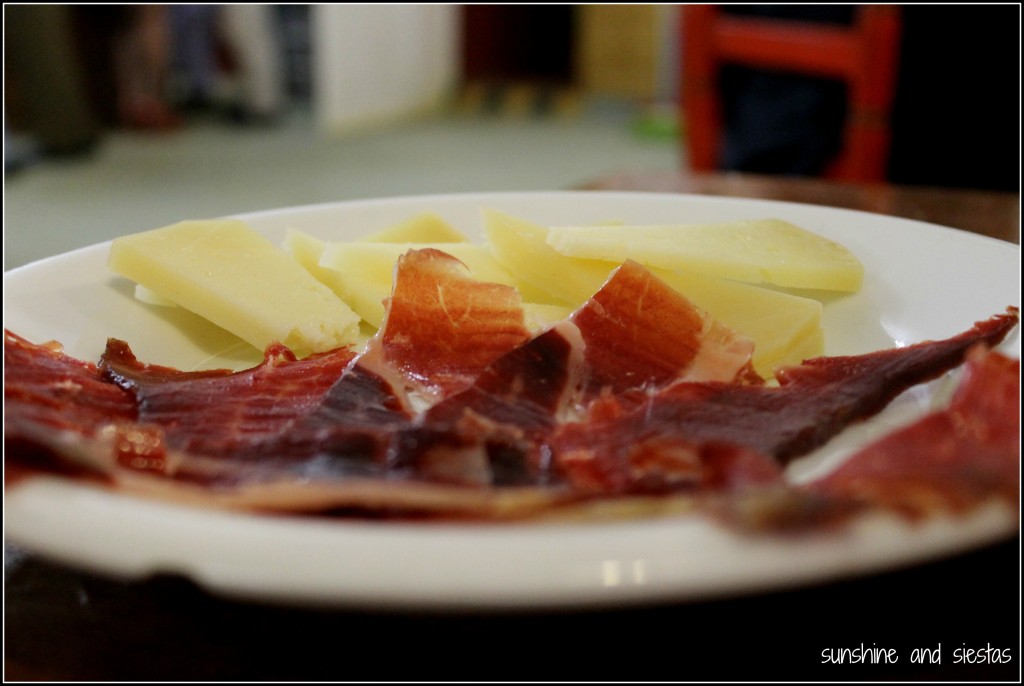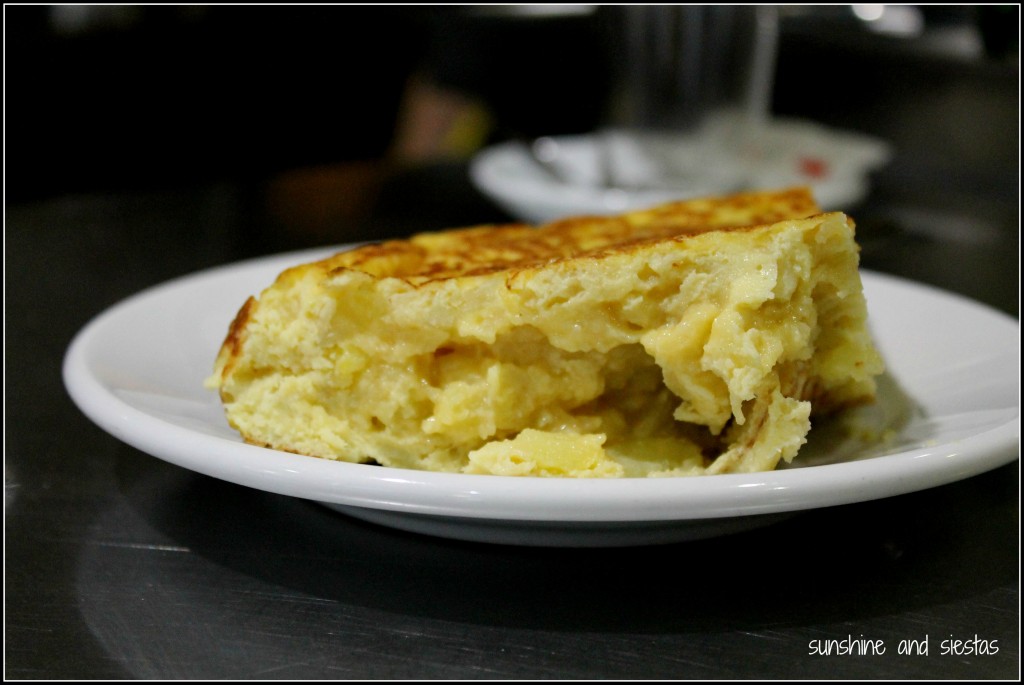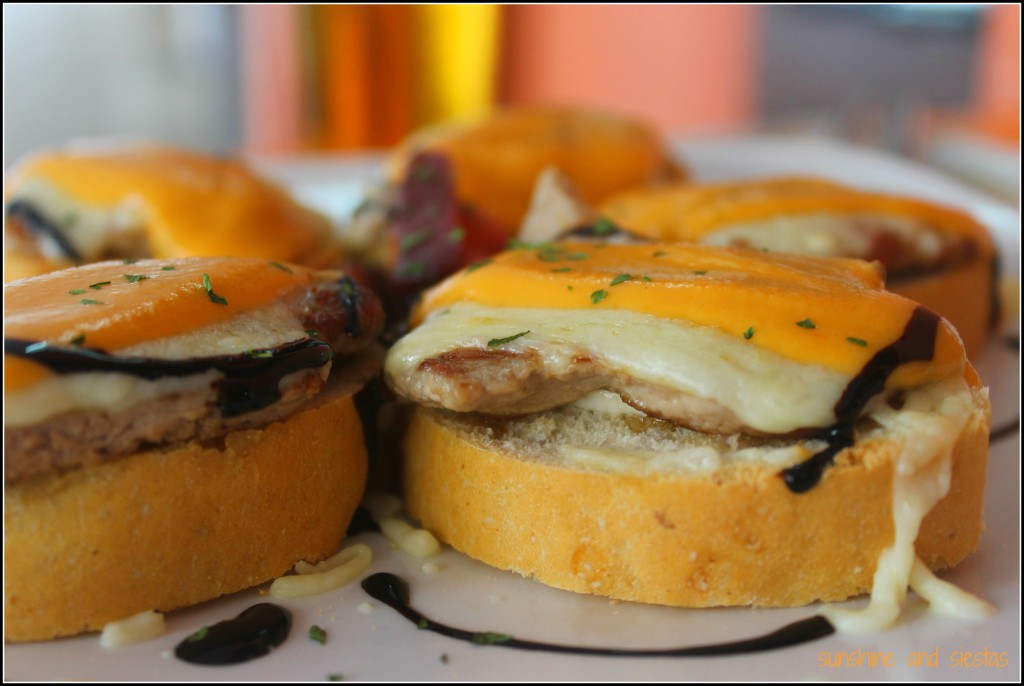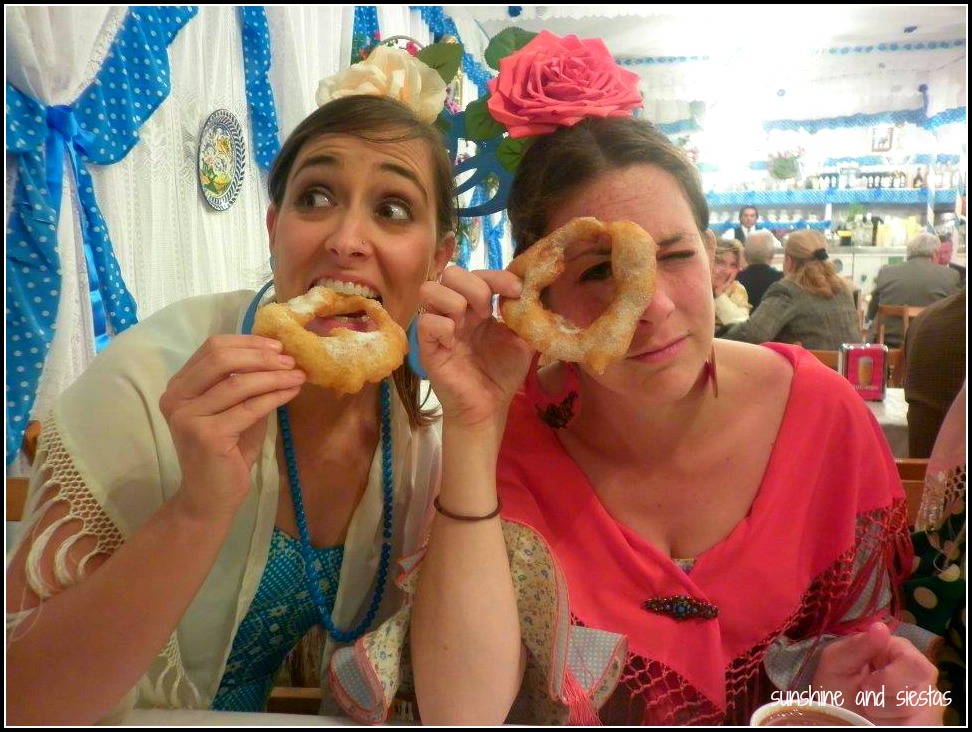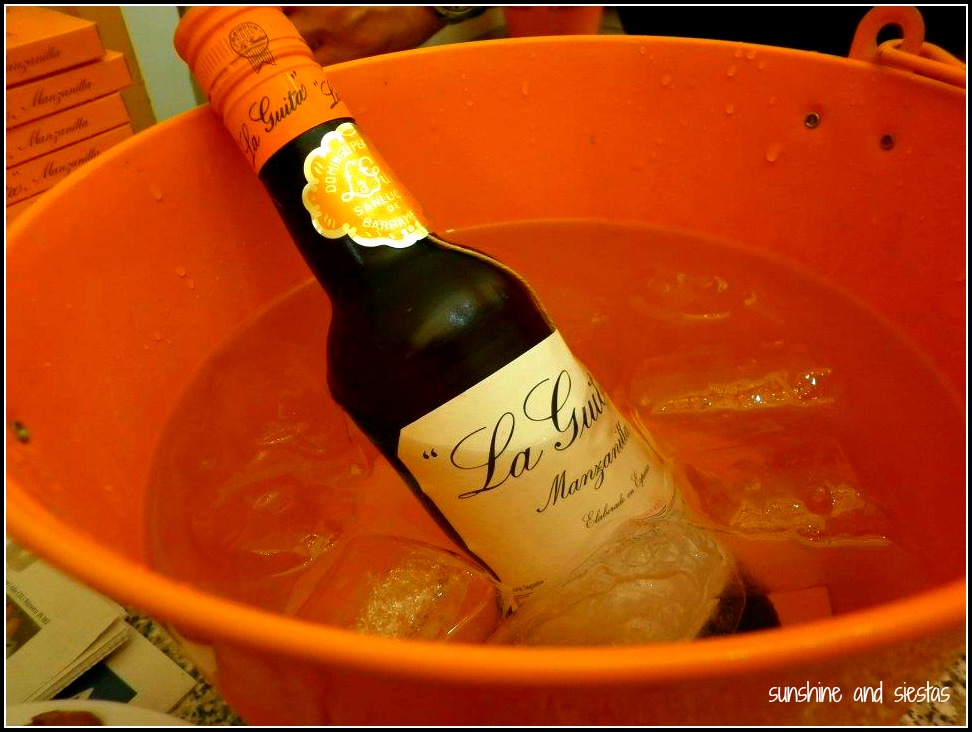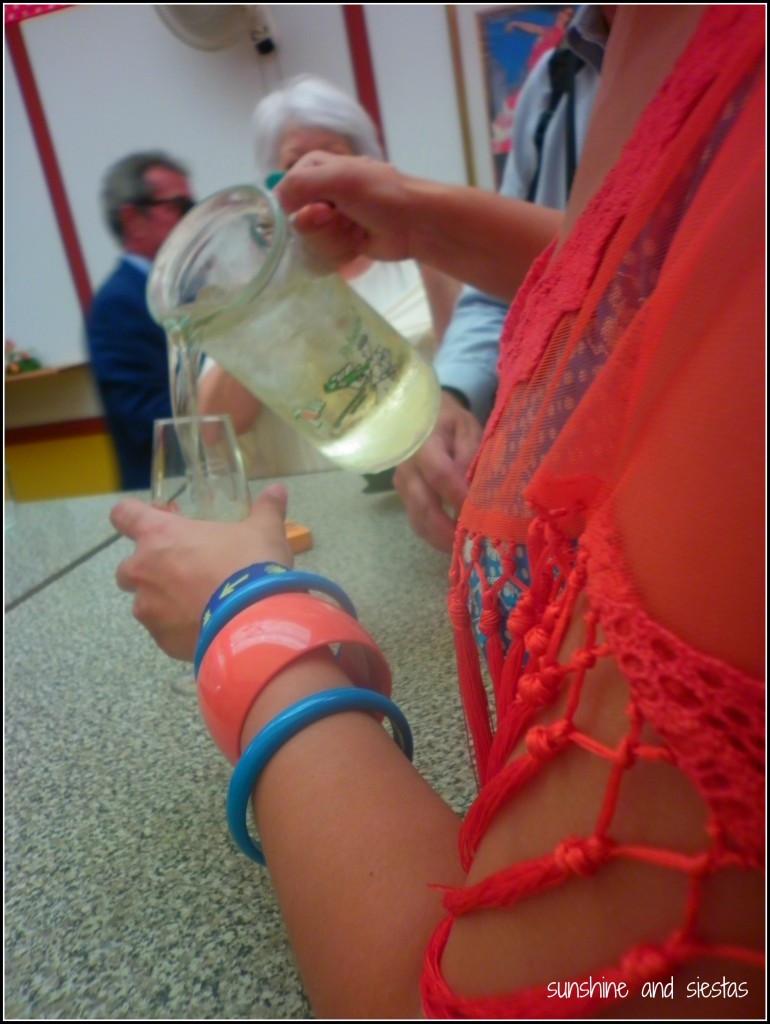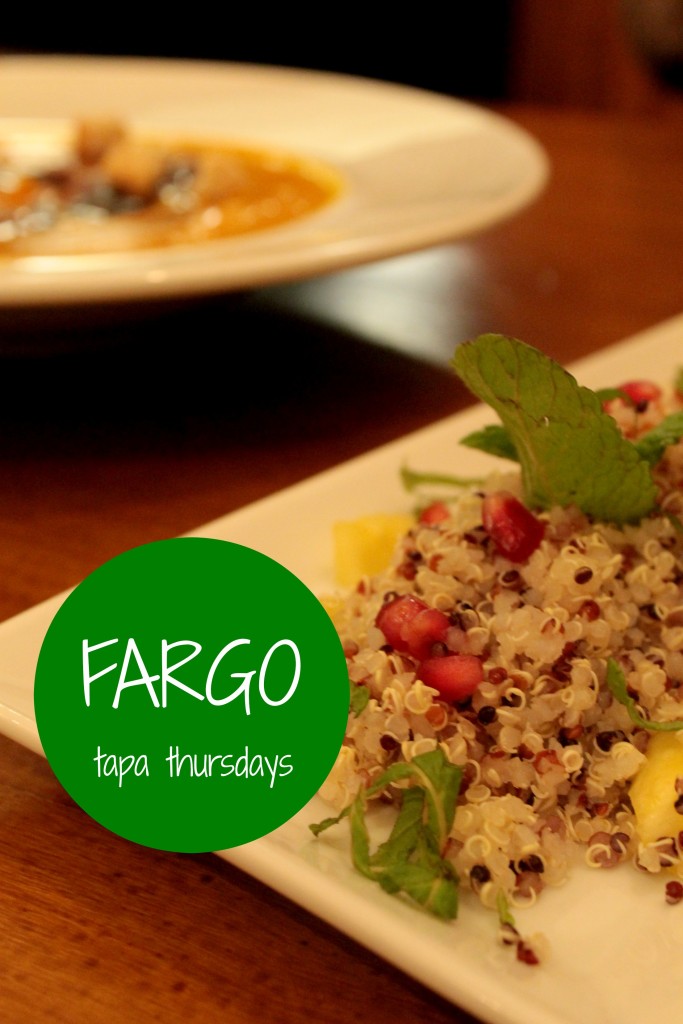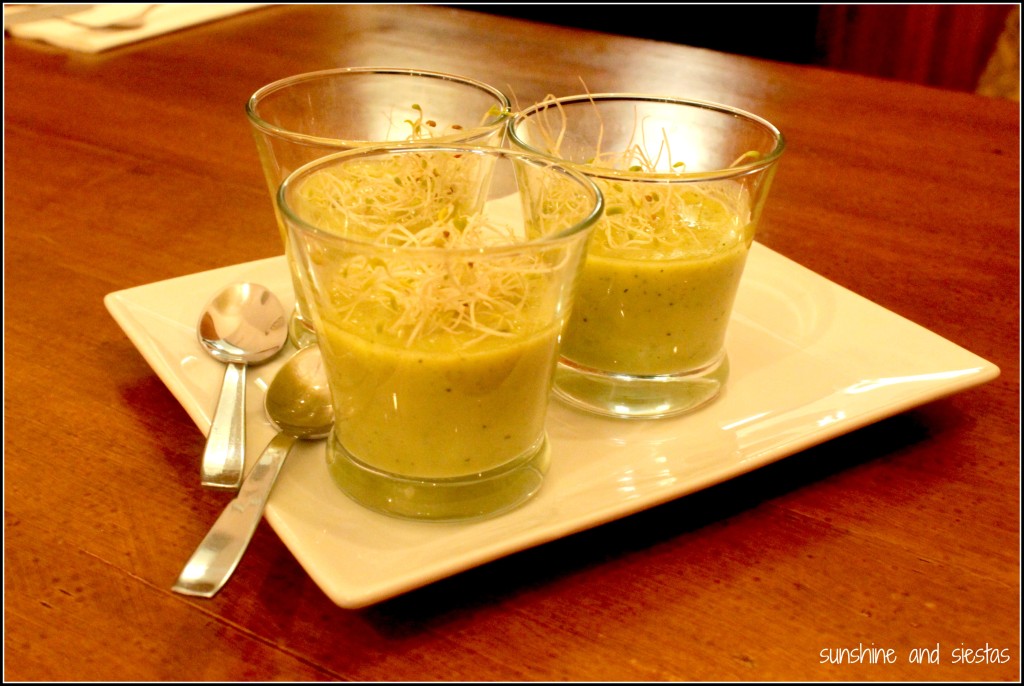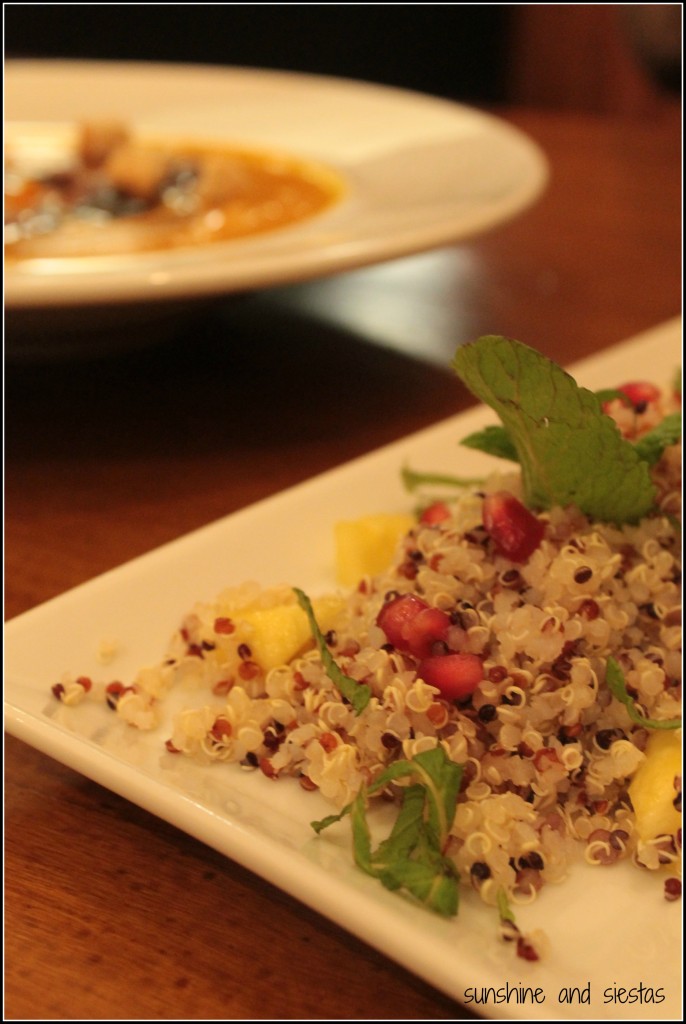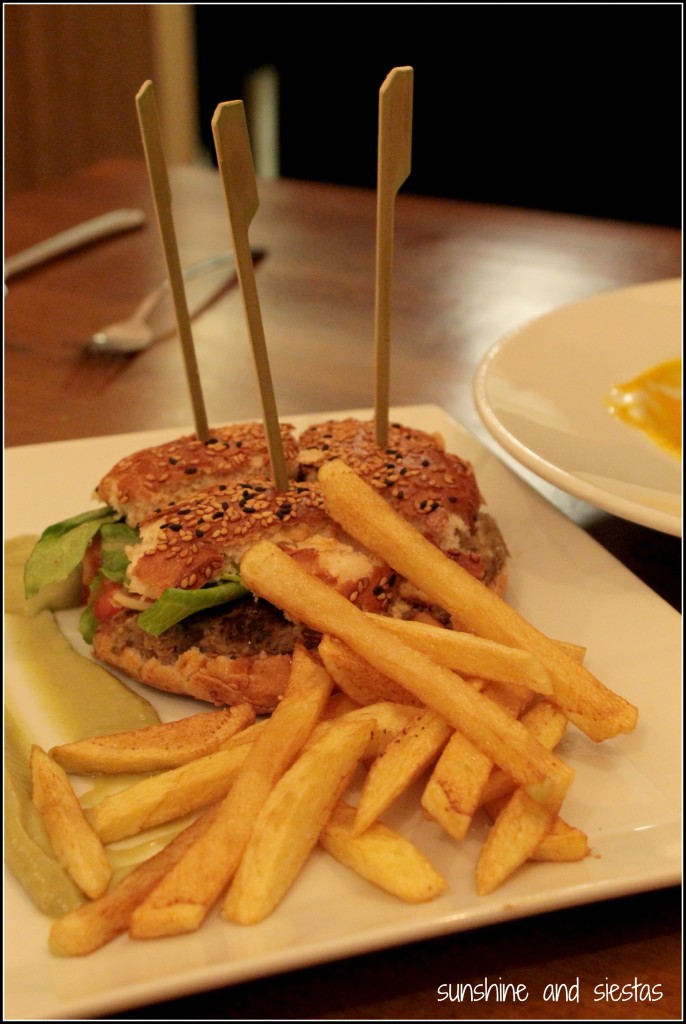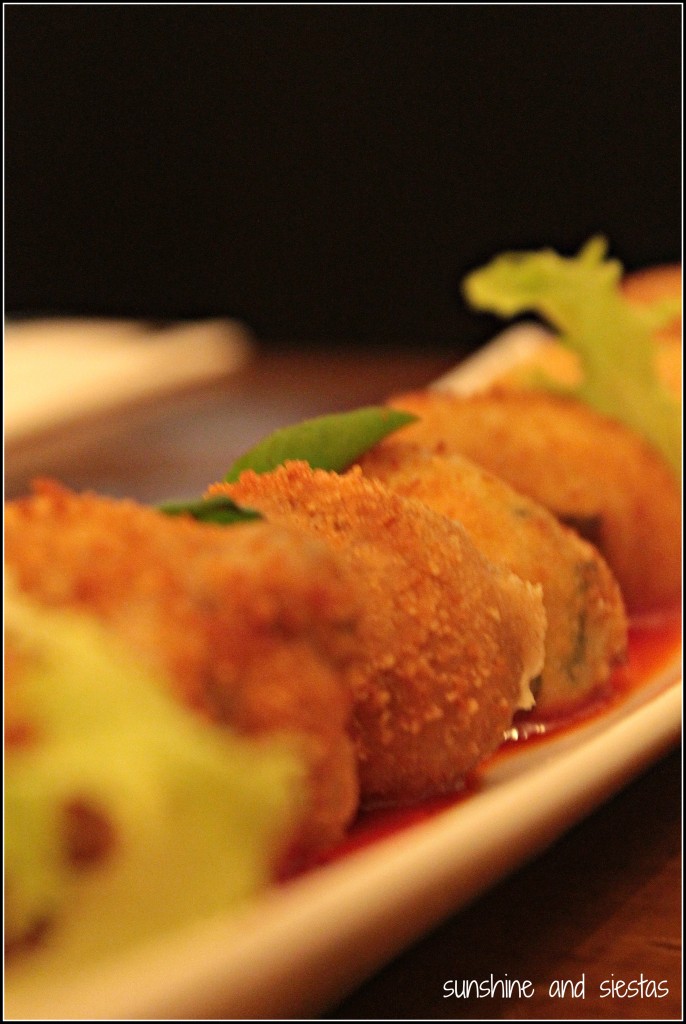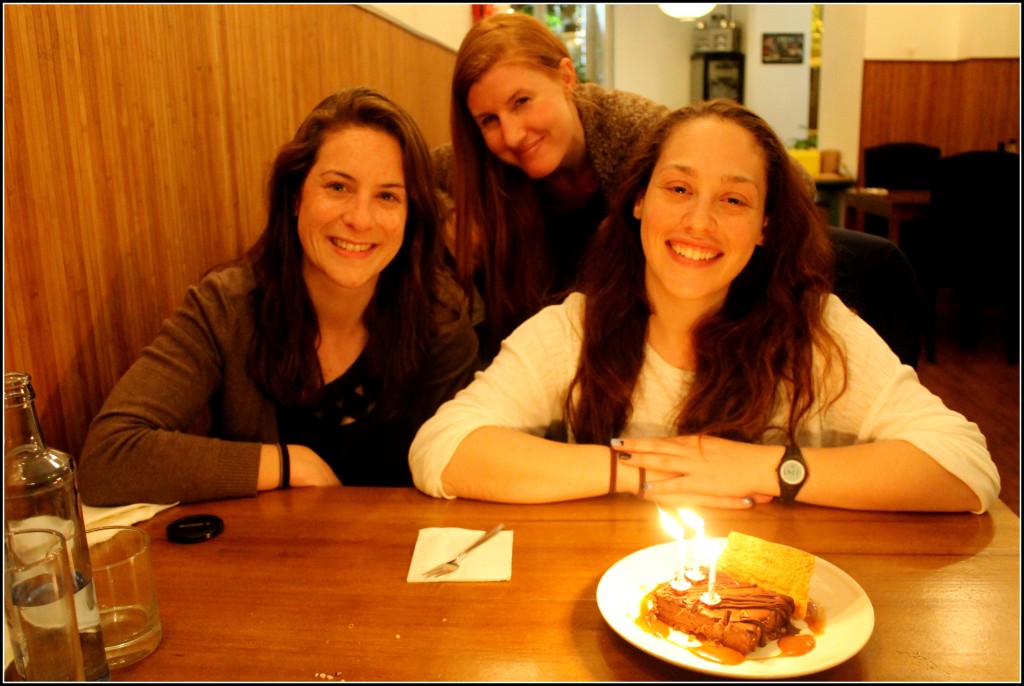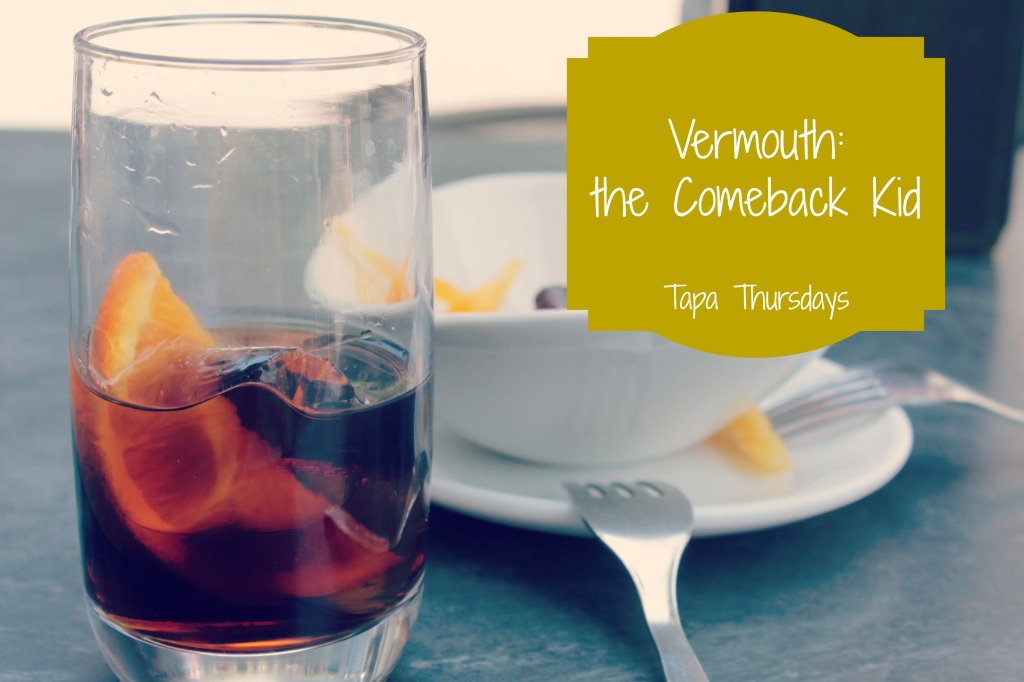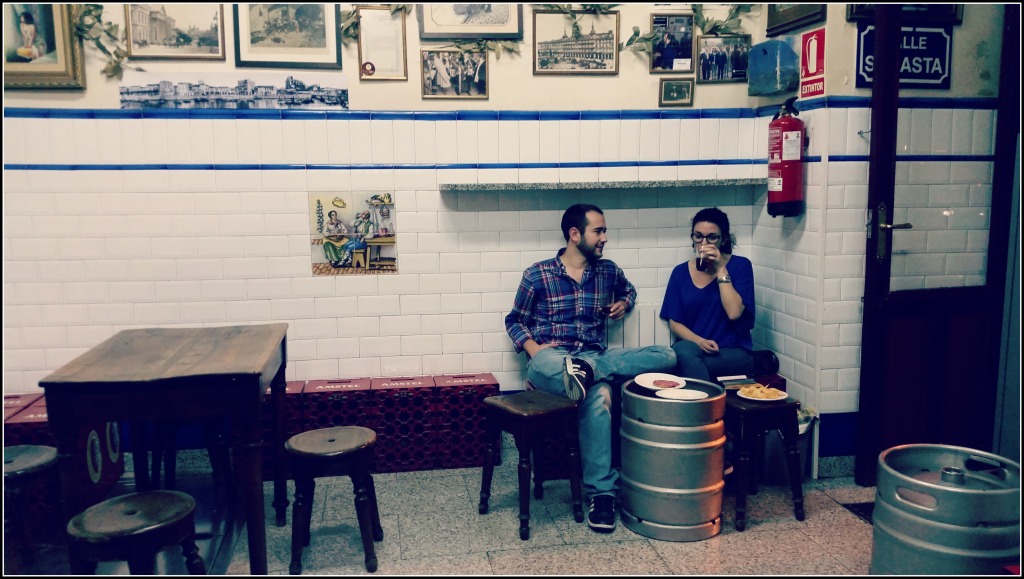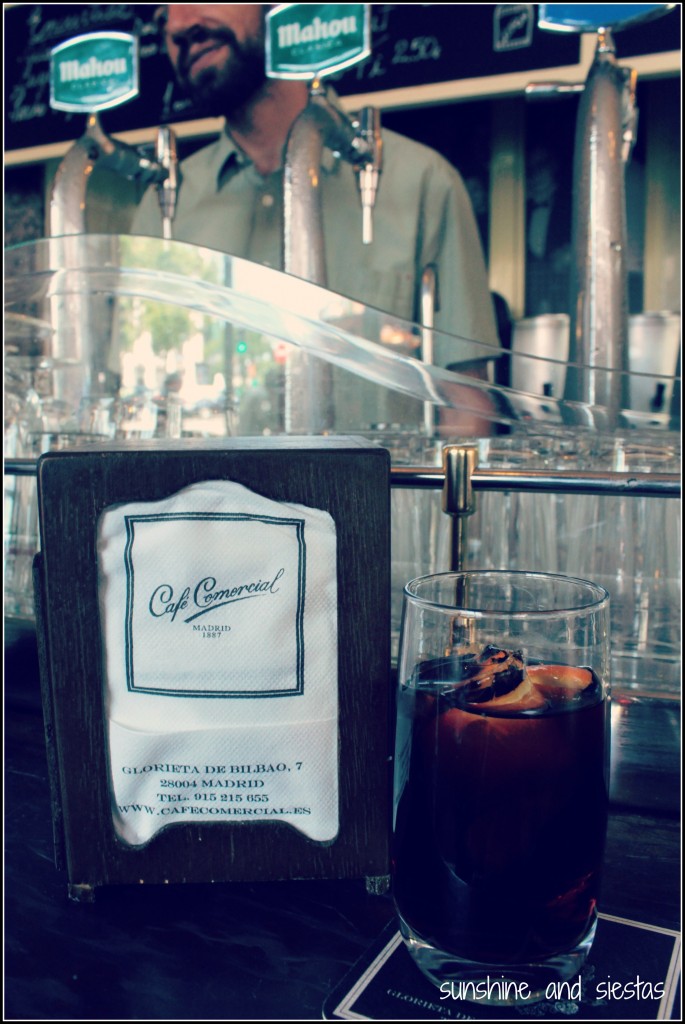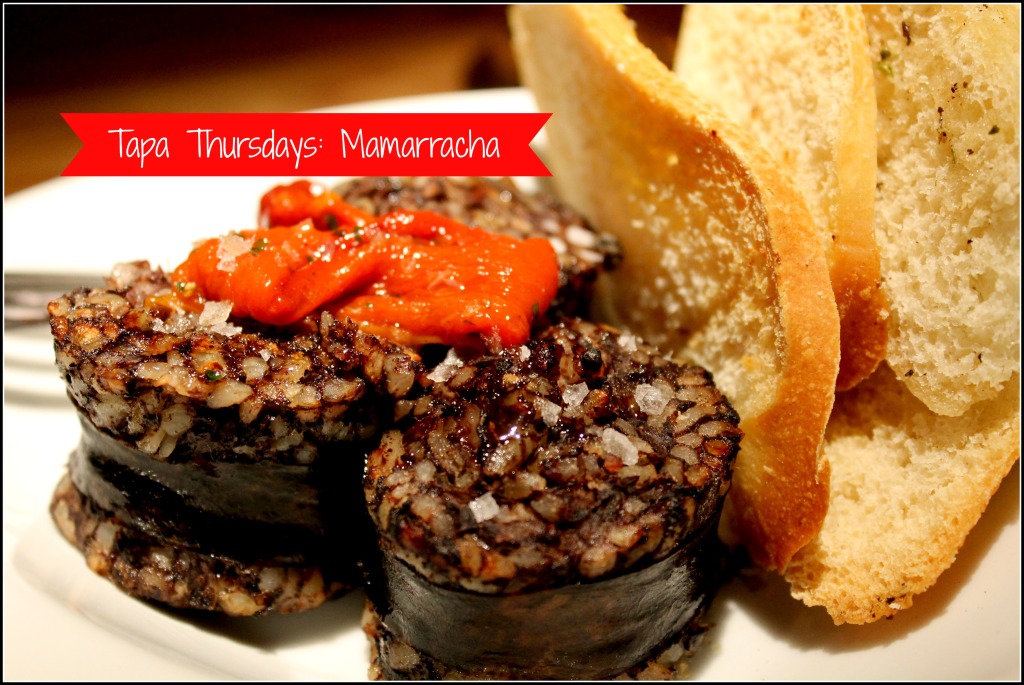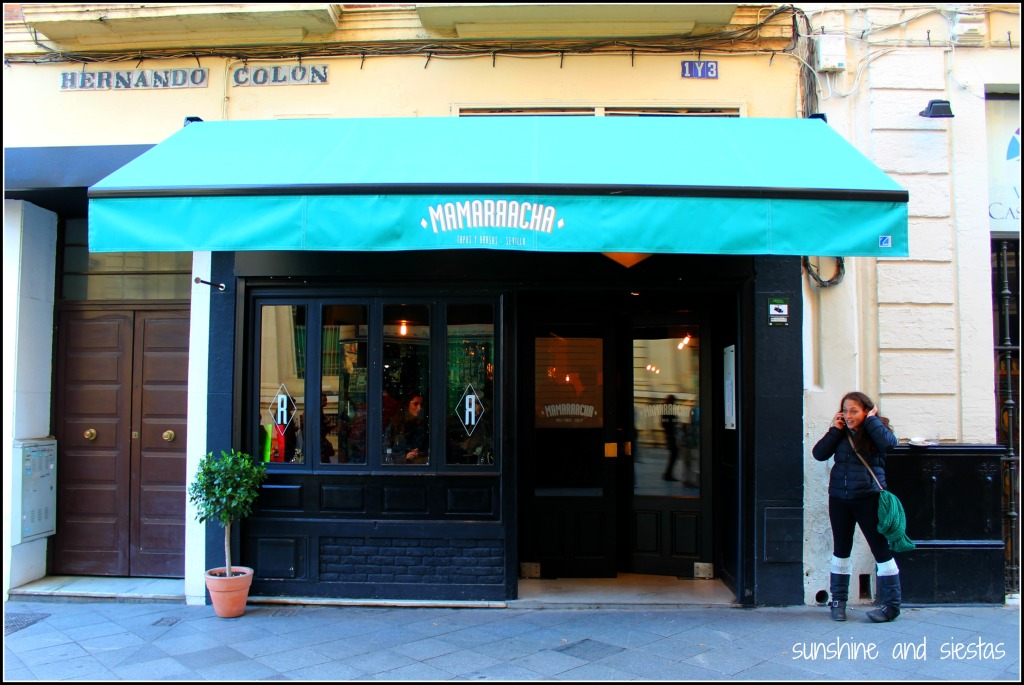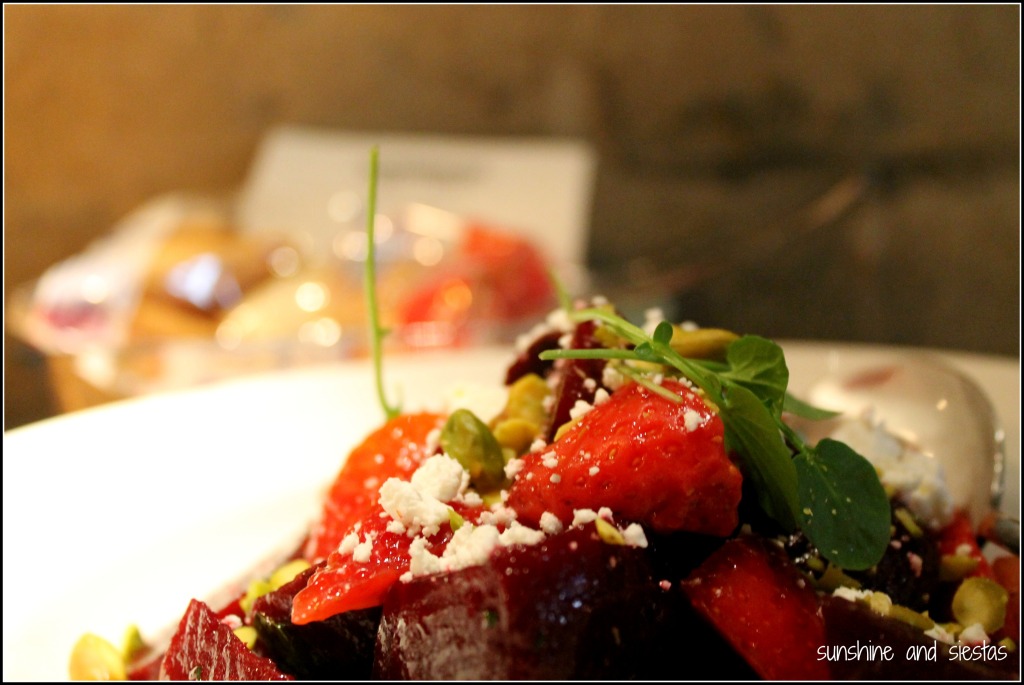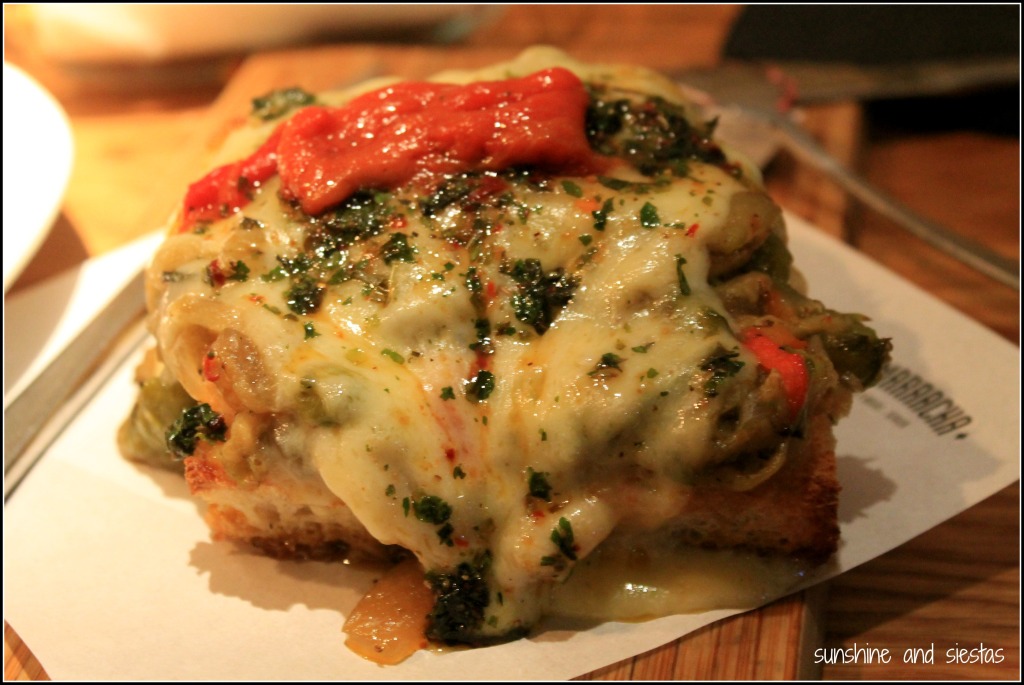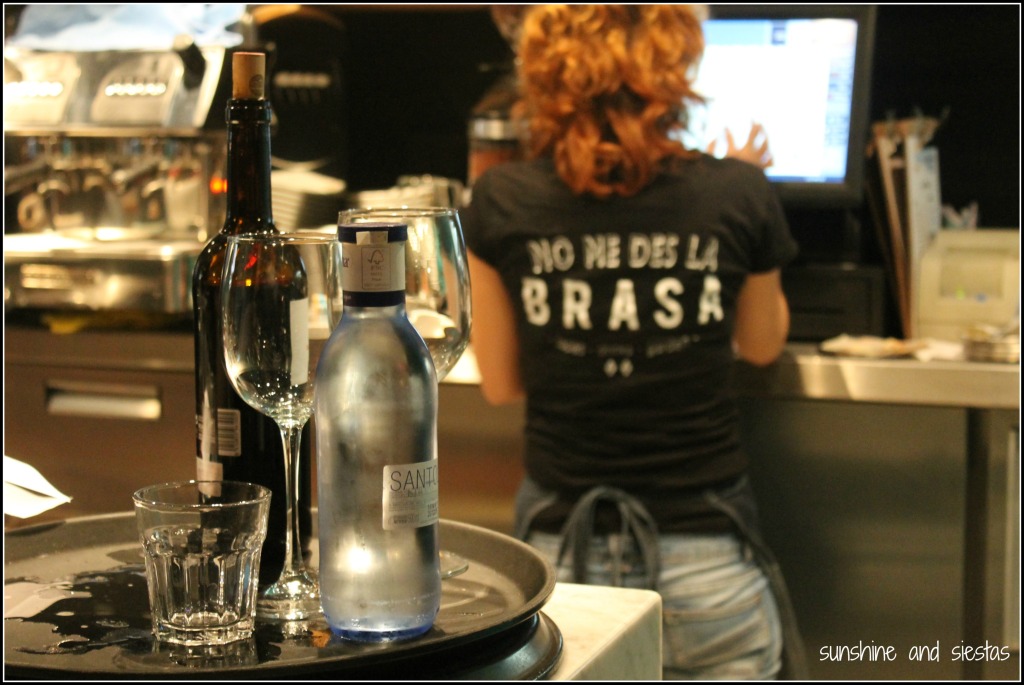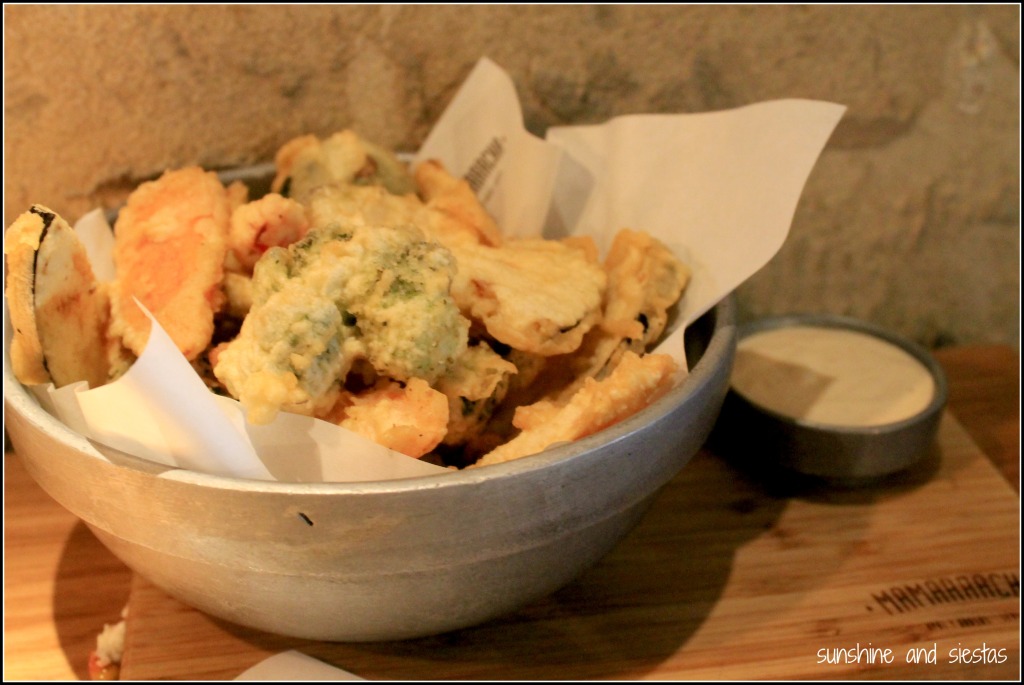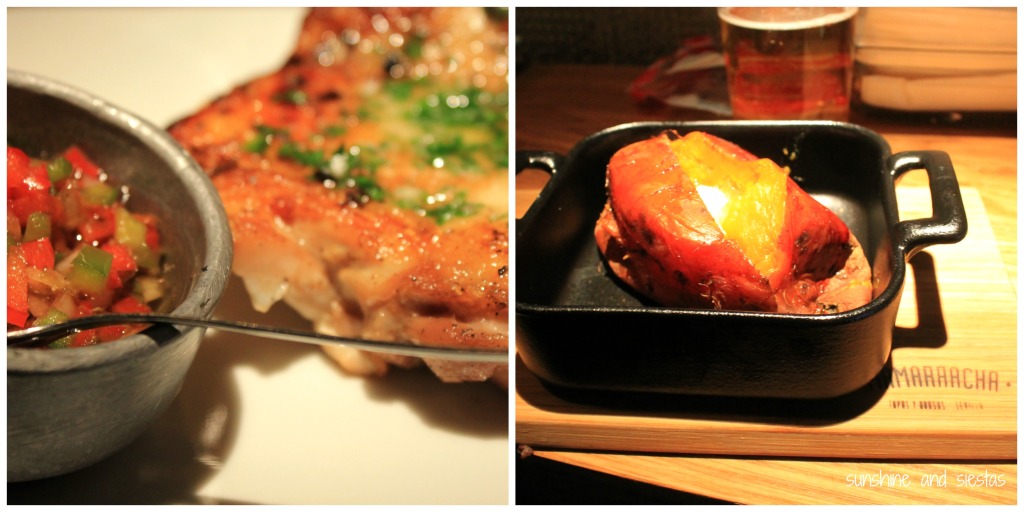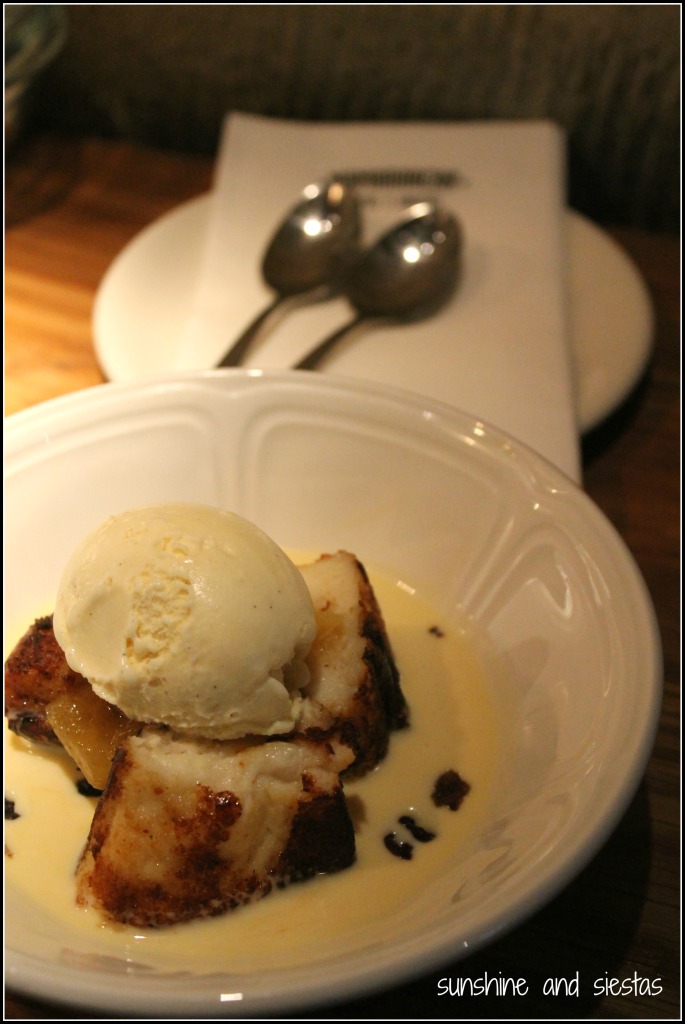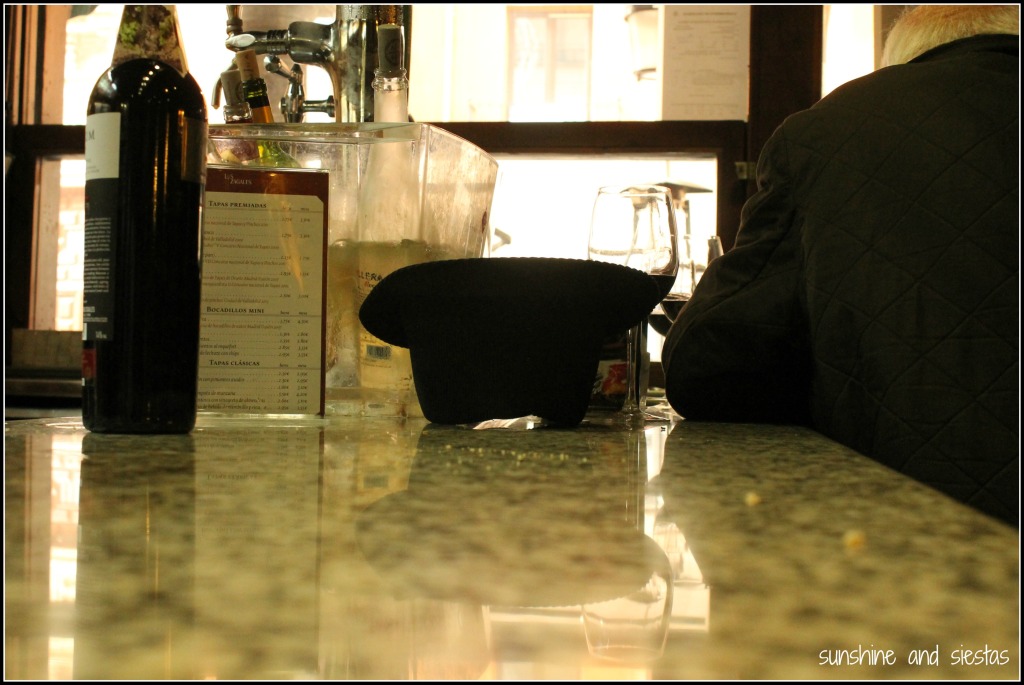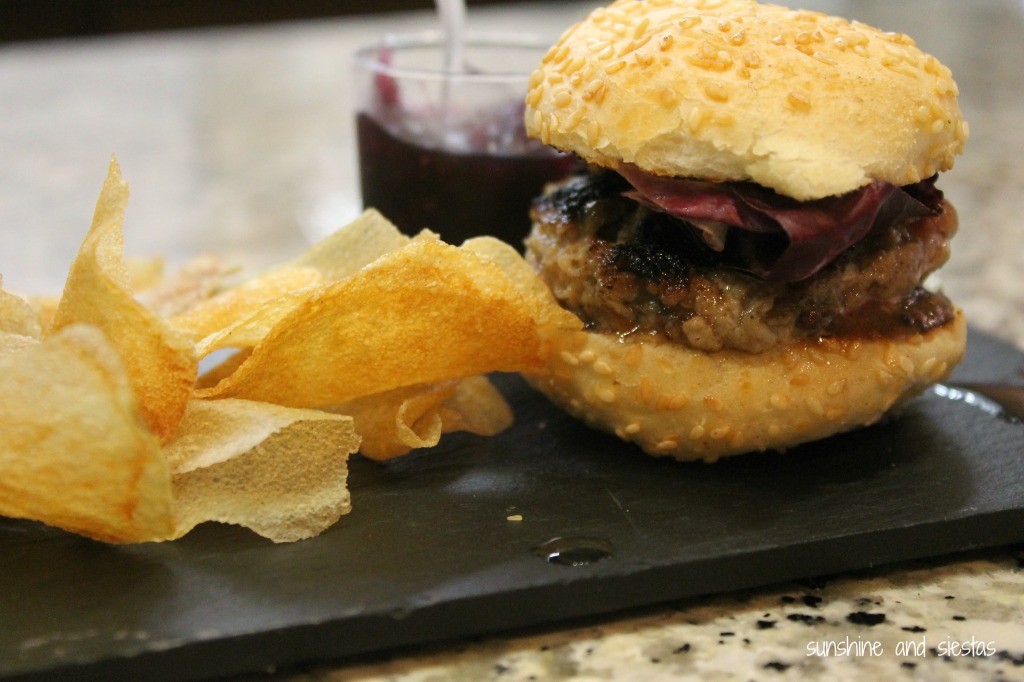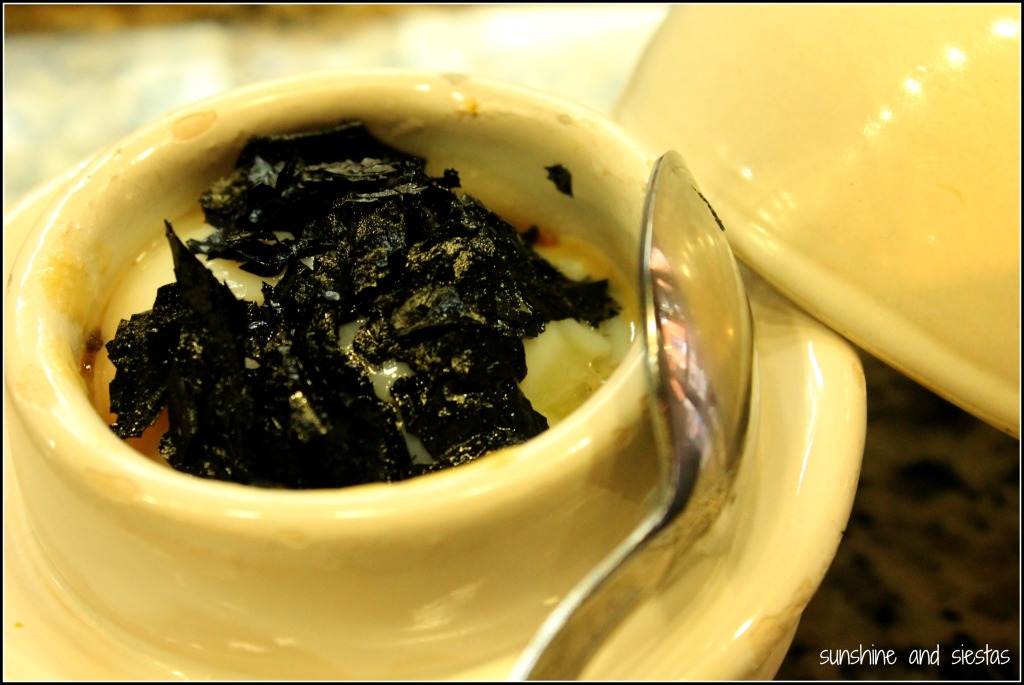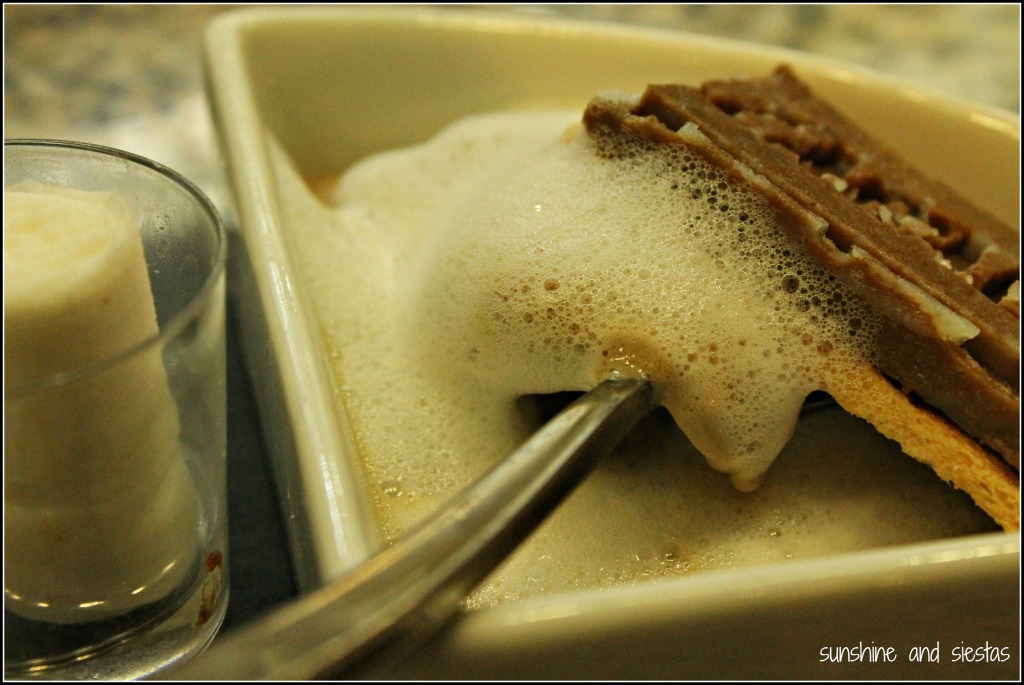I’ll admit it – I have a big ol’ crush on Jerez de la Frontera.
While Seville swoons, Jerez pokes and teases, yet always entices. It moves slower. It seems to stay for just one more round of ‘la penúltima.’ Jerez knows how to party, but it also knows how to stop and smell the sherry.
And at just an hour car ride south of La Hispalense, it’s easy to cheat on Seville with Jeré.

No stranger to Spanish wine culture, Jerez – along with El Puerto de Santa María and Sanlúcar de Barrameda – make up the Sherry Triangle and produce white wine of the same name. I discovered the Feria de la Vendimia thanks to Devour Spain‘s monthly newsletter, and though we’d missed the grape stomping and the sherry cooking classes, there was still one lingering activity on a sunny Saturday late in the summer: the Feria Gastronómica.
Set in a shady plaza sandwiched between the Alcázar fortress and world-famous González Byass Wineries, nearly two dozen tents offered special tapas and a drink for 3.50€ under caseta tents. Rather than do a lap, we beelined straight to a brightly colored bar at the west end of the square. Being hangry is a good enough excuse for me to follow my nose and tummy into a tent.
Jerezano cuisine is similar to that of Seville, but because the province of Cádiz boasts both sea and fertile terrain, there is more fresh fish and seafood, plus heartier meats. The Bahía de Cádiz is famed for Almendraba tuna and bull meat, called retinto. While it would have been easy to choose croquetas and solomillo, I was determined to choose tapas that were more regional.
Here’s what we devoured:
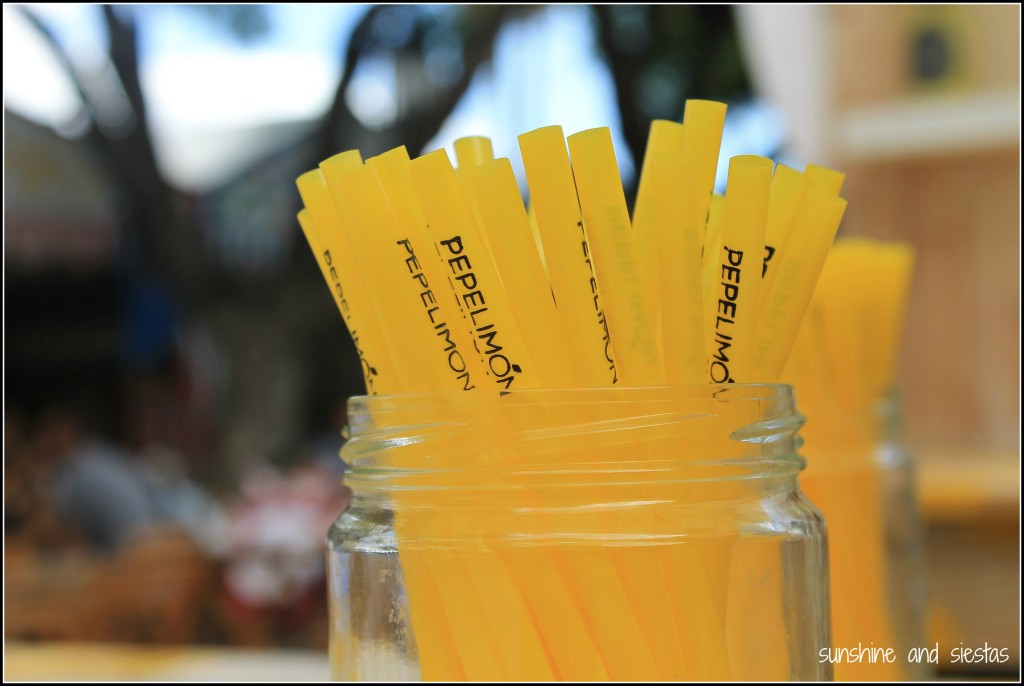
While I’ve become a sherry convert thanks to the Feria de Sevilla, my friends find it too bitter. Pepelimón is the newest product from the makers of a fino variety called Tío Pepe that is half fino, half 100% lemon juice. Like rebujito, it’s sweet and potent (and don’t fret, I had a glass of sherry after we’d eaten).
Craft beer is on the rise in Spain (admit you just did a fist pump), and Jerez has a new kid on the block, Destraperlo. Irene invited us in for free samples of their pilsner and red brands. La birra más burra es muy buena – it’s got more body than local favorite Cruzcampo, but with less bite than an IPA, making it just right for the Spanish palate.
Thirst quenched, we stuck around in the Guardia de Ángel tent for ensaladilla del pulpo. Octopus is one of those Spanish foods that I would have never thought I’d like, but mixed with mayonnaise and paprika, the salty taste was too overwhelming.
Sticking with seafood, I nabbed some albóndigas de atún con queso payoyo with homemade tomato sauce. Both alemndraba tuna and Payoyo cheese are native to Cádiz, and this was indeed the star dish of the day.
The berenjena con queso de cabra carmelizada en Pedro Ximénez came recommended at Bar Papanata’s tent. Washed down with sherry, of course!
Realizing we’d only been on one side of the food fair, we got one more drink at Restaurante Bar Gula. I wanted to try the hamburguesa de retinto, a bull’s meat burger, but we opted for croquetas de tomate y albahaca con jamón and a chicken satay (hey, when you find international food in Andalucía, you order it!).
After five tapas a piece, we were stuffed!
That day was one of those typical Andalusian Saturdays where you look at your watch and ask, wait! Where did the time go? Between catching up on our summers, sampling tapas and ordering another round, it was suddenly after 5pm and time for merienda.
Spanish desserts and I broke up a long time ago, and Jerez’s dessert game seemed a little off (we were so desperate we hiked to a Foster’s Hollywood, the most jankity Friday’s you can imagine, to find it closed). We settled on cakes from a pastelería.
While Jerez’s food culture isn’t terribly different from Seville’s, I can never resist a decent food festival, especially when all of the bars are clumped together.
While Jerez may not be the food mecca, I have a feeling that Sevill’s kid brother might soon have its swan song.
I visited Jerez’s Feria de la Vendimia with Caser Expat Insurance’s Typical NonSpanish project. All opinions and extra calories are my own.
Have you ever been to a Food Festival in Spain?
